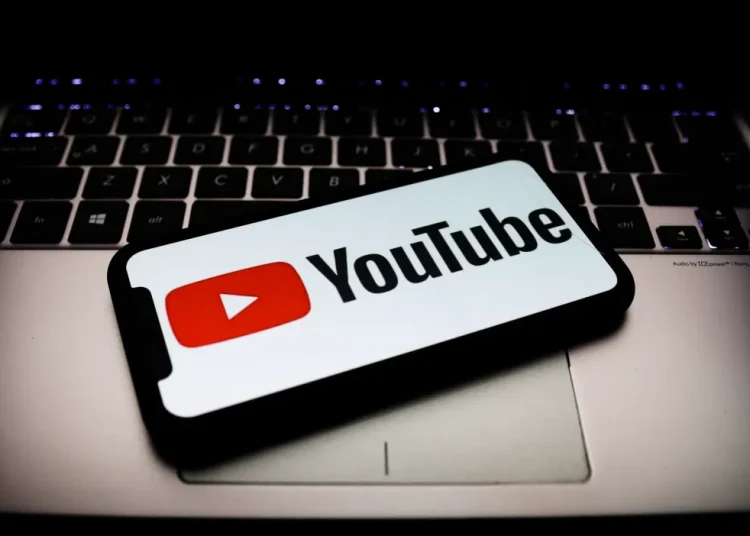Cybercriminals are targeting YouTube channel administrators, sales, and marketing teams with phishing campaigns impersonating trusted brands to deliver Windows malware. The attackers lure victims with fake sponsorship offers, compromising sensitive data and account credentials.
How It Works
The attackers use automation tools to identify and collect publicly available email addresses of YouTube channel owners, particularly those with large audiences and significant online visibility. These phishing campaigns are designed to appear as highly lucrative brand partnerships, offering up to $50,000 in sponsorship payments to entice victims into engaging further.
For example, a fake email might claim to come from a well-known brand like “XYZ Tech,” promising a sponsorship deal for a high-profile campaign. Once the target responds or engages, they are sent a OneDrive link containing a password-protected ZIP file. The email conveniently provides the password, a tactic used to bypass email security filters that might otherwise flag or quarantine suspicious attachments.
The malicious file within the archive is disguised with innocent-sounding names, such as those designed to appear harmless or relevant to common tasks. For example, a name like ‘webcam.pif’ might trick less tech-savvy users into thinking it’s a legitimate file related to webcam software, while in reality, it’s an executable file that initiates malware processes.
The “webcam.pif” file is particularly misleading because its name suggests a legitimate purpose, such as webcam-related software, but in reality, it triggers malware processes. Upon opening the file, the malware executes silently, initiating processes that steal sensitive information.
What Does the Malware Do?
This malware is categorized as an info-stealer, meaning it is designed to harvest sensitive information from victims, including:
- Browser credentials (saved usernames and passwords).
- Cookies (to bypass account logins).
- Clipboard data (copied passwords, crypto wallet keys, or financial data).
The stolen data is then exfiltrated to the attackers’ servers, where it can be sold, exploited, or used to take over accounts.
CloudSek highlighted that the malware has already been flagged by 48 different security vendors, which means tools like Malwarebytes, Avast, and McAfee can detect and neutralize it, provided they are updated and enabled.
Why YouTube Channels Are Being Targeted
- Financial Incentives:
- YouTube creators often rely on sponsorships and brand partnerships for revenue. This makes them particularly susceptible to fake offers promising high payouts.
- High-Value Accounts:
- Popular YouTube channels with millions of subscribers are prime targets for takeover, as they provide attackers a platform to spread malware or resell access on dark web marketplaces.
- Data Exploitation:
- Stealing browser credentials and cookies allows attackers to access not just YouTube accounts, but also email, payment platforms, and other associated services.
Red Flags to Watch For
To avoid falling victim to such attacks, YouTube creators and marketing teams should watch out for the following warning signs:
- Suspicious Senders: Emails from newly created addresses or domains unrelated to official brands.
- Password-Protected Attachments: Genuine brands rarely use password-protected ZIP or RAR files for sponsorship discussions.
- Unusual File Names: Files like webcam.pif or disguised executables (.exe, .scr) are clear red flags, especially when unrelated to the purpose stated in the email.
- Financial Data Requests: Scammers often ask for sensitive financial details upfront, which legitimate sponsors would not do.
How to Protect Yourself
To protect yourself online, it’s important to follow several key practices.
- First, always verify sponsorship emails by cross-checking the sender’s address with official brand domains or contacting the company through verified channels. Avoid downloading suspicious files, especially ZIP attachments, from unsolicited emails.
- Keeping your security software, like Malwarebytes, Windows Defender, or Avast, updated and active is also crucial.
- Enabling Two-Factor Authentication (2FA) on platforms such as YouTube adds an extra layer of security against unauthorized logins. Additionally, educating your team to recognize phishing attempts, suspicious links, and common attack tactics can help prevent breaches.
- Lastly, regularly backing up your YouTube channel data and account settings ensures you won’t lose valuable information in case of an attack. This campaign reflects a growing trend in prioritizing online safety and awareness.
YouTube creators must stay vigilant against phishing attacks disguised as sponsorship offers. By recognizing the red flags, verifying communication, and utilizing reliable security tools, channel owners can protect their accounts, credentials, and sensitive data from cybercriminals. As attackers become more sophisticated, staying informed is the best defense practice.




























